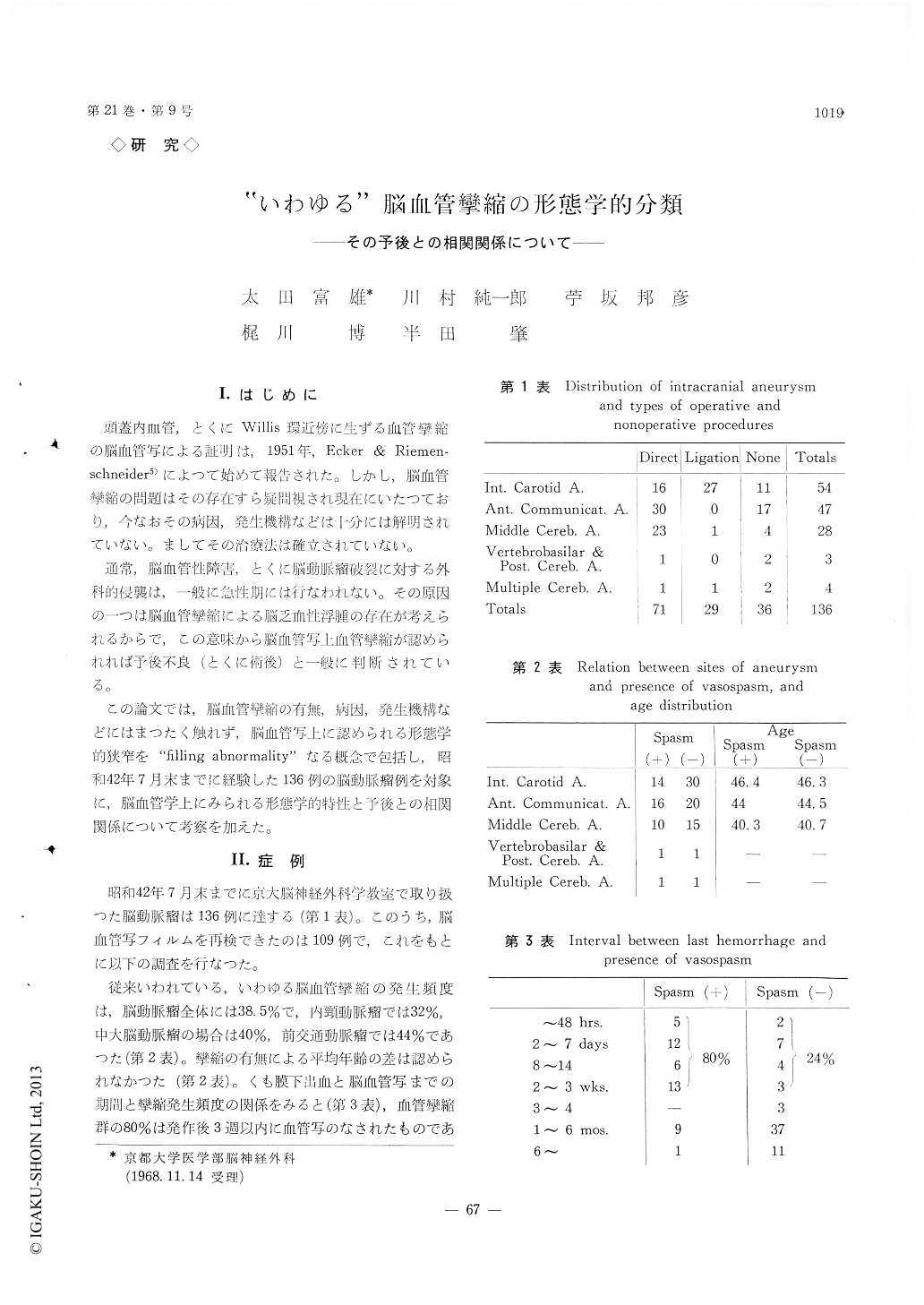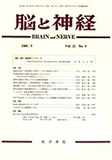Japanese
English
- 有料閲覧
- Abstract 文献概要
- 1ページ目 Look Inside
(1)教室で取り扱つた脳動脈瘤136例中,脳血管写フィルムを再検できた109例を対象に,脳血管写に認められる形態学的"造影異常(filling abnormalities)"を検討した。
(2)造影異常を6型に分類した,,すなわちdiffuse,segmental,nodularおよびirregular narrowings,taper-ingおよびcentral sparingである。
(3)この分類に従つて,その型と部位的分布を総括して予後との相関関係をみると,diffuse narrowingがA1〜A2にかけて存在する時,他の型の造影異常に比し断然予後不良を示すことが明らかになつた。したがつて脳血管攣縮が予後を左右するのは前交通動脈瘤の場合著明で,他部における動脈瘤の場合,血管攣縮はあまり問題にならないように思われる。
(4)脳血管攣縮に関し,脳血管写の方面から文献的考察を行なうと同時に,われわれの実験結果から,脳血管写上で血管攣縮といわれているもののなかに,機質的変化(たとえば白色血栓)によるものがあると思われる根拠について言及した。
As one of the series of clinical and experimental studies of cerebral vasospasm, this article has been devoted to classify angiographic filling abnormalities often seen after the rupture of intracranial aneur-ysms and to make clear the probable correlation between existence of vasospasm and postoperative prognosis. Angiographic films could be re-checkedand analyzed in 109 cases out of 136 intracranial aneurysms experienced in our department.
Six types of angiographic filling abnormalities have been classified morphologically ; diffuse, seg-mental, nodular and irregular narrowings, tapering and central sparing (Table 8). Having been analyzed with this classification, it has become clear that diffuse narrowing has grave influence to postopera-tive prognosis, especially when it has been seen in proximal part of anterior cerebral arteries (A1 to A2). While, any other types of filling abnormalities have not had special influence to postoperative prognosis.
Possible interpretation of angiographic filling abnormalities as well as functional change have been discussed from the point of white thrombus forma-tion close to the spastic vessel, which has been de-monstrated in cat's internal carotid and anterior cerebral arteries (Ohta and Baldwin, 1968).

Copyright © 1969, Igaku-Shoin Ltd. All rights reserved.


